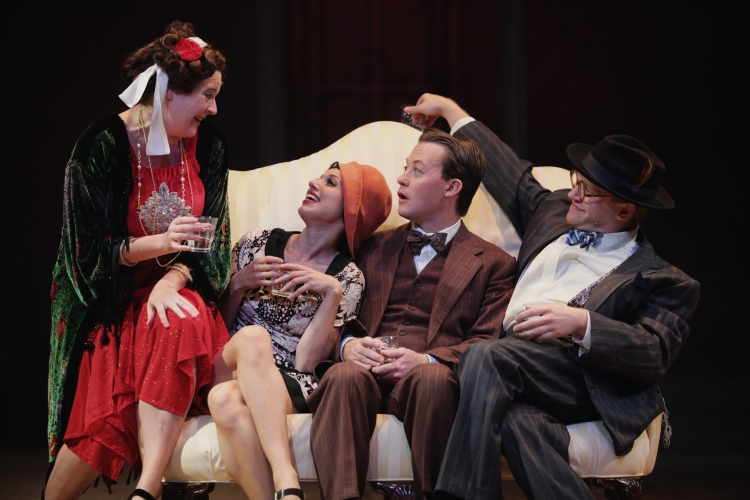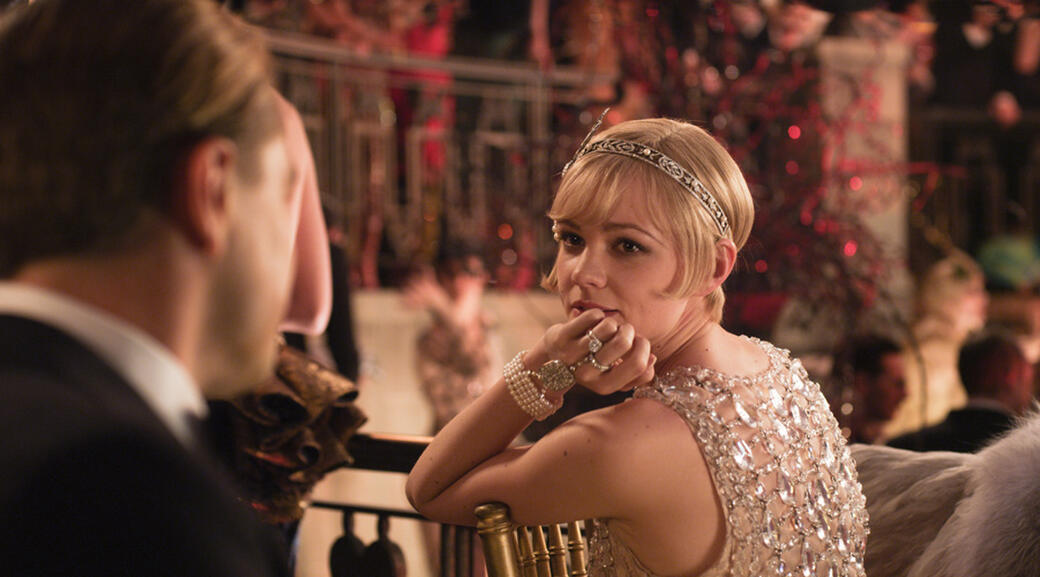The Great Gatsby: The Mckees & Their Role - Analysis & Summary
In the glittering, decadent world of F. Scott Fitzgerald's "The Great Gatsby," do the seemingly minor characters truly hold significant weight, influencing the narrative's trajectory and reflecting the era's complexities? The characters of Mr. and Mrs. McKee, though seemingly relegated to the periphery, serve as potent symbols of the shallow, superficial society Fitzgerald so expertly critiques. Their presence, their interactions, and their very existence within the story illuminate the novel's core themes of wealth, class, and the illusion of the American Dream.
The McKees, residents of the same apartment building as Tom and Myrtle Buchanan, are introduced to the reader through Nick Carraway's observant eye. They are, to put it mildly, a rather peculiar pair. Mr. McKee, a photographer, is described as "pale and feminine," a description that subtly hints at a detachment from traditional masculine roles, particularly in the context of the roaring twenties. Mrs. McKee, on the other hand, is characterized as "shrill, languid, handsome, and horrible," a woman consumed by trivialities and a desperate desire for social validation. Their interactions with Nick, and their observations of other characters, provide a crucial window into the novel's exploration of societal values and the moral decay lurking beneath the veneer of prosperity.
| Category | Details |
|---|---|
| Full Name | Chester McKee and Mrs. McKee (Name is not explicitly given) |
| Role in "The Great Gatsby" | Minor characters; residents of the same apartment building as Tom and Myrtle Buchanan. |
| Occupation | Chester McKee is a photographer. |
| Physical Description | Mr. McKee: Pale and "feminine." Mrs. McKee: Shrill, languid, handsome, and described as "horrible" by Nick. |
| Personality Traits | Mr. McKee: Appears somewhat detached and perhaps lacking in ambition. Mrs. McKee: Superficial, gossipy, and preoccupied with appearances. |
| Relationship with Other Characters | Attend gatherings with Tom and Myrtle. Mrs. McKee attempts to involve her husband in photographing others. Develop a brief acquaintance with Nick Carraway. |
| Significance | Represent the shallow, superficial aspects of the wealthy society Fitzgerald critiques. Serve as a contrast to the more complex characters. |
| Key Interactions | The party in Chapter 2, where they interact with Nick, Tom, and Myrtle. Mrs. McKee's attempts to get her husband to photograph Myrtle. Mr. McKee's invitation to lunch with Nick. |
| Symbolic Role | Symbolize the superficiality and moral decay of the wealthy class. |
| Notable Quotes | Mrs. McKee: "I like your dress, "I think it's adorable." |
| Where to Find More Information | SparkNotes: The Great Gatsby Characters |
The scene in chapter two, where the McKees are introduced, is set in the apartment shared by Tom and Myrtle in New York City. It's a cramped, stifling space, a stark contrast to the opulent mansions and sprawling estates that dominate the novel's narrative. Here, the McKees, along with Nick, Tom, Myrtle, and Catherine (Myrtle's sister), gather for an evening of revelry. The party is marked by excessive drinking, drunken pronouncements, and a general sense of moral laxity. It's in this environment that the McKees' true natures are revealed.
Mrs. McKee, in particular, is depicted as a woman obsessed with appearances and superficiality. She attempts to engage her husband in conversations about photography, hoping to elevate their social standing through the art of image-making. She suggests that Mr. McKee photograph Myrtle, highlighting the perceived beauty and desirability of the mistress. However, Mr. McKee remains largely indifferent, underscoring the shallowness of their relationship and the artificiality of their pursuits. The contrast between their words and actions, the careful observation of social rituals, and the underlying emptiness of their existence creates a powerful social commentary.
The brief exchange between Mrs. McKee and Myrtle Wilson, where Mrs. McKee compliments Myrtle's dress, reveals more about their world. Mrs. Wilson's response, "It's just a crazy old thing," and her later explanation that she wears it "sometimes when I don't care what I look like," speaks volumes about the desperation for attention and validation within this society. Mrs. McKee's insistence that the dress "looks wonderful on you" highlights the exaggerated and often insincere flattery that permeates their social circles. These interactions serve to expose the artificiality and superficiality that define the world they inhabit.
The role of Mr. McKee as a photographer is particularly significant. Photography, at the time, was still a relatively new medium, and it was quickly becoming associated with glamour, celebrity, and the cultivation of a public image. Through Mr. McKee, Fitzgerald satirizes the obsession with appearances and the desire to create a false facade. The fact that Mr. McKee is more interested in his work than in his wife's pursuits demonstrates the emptiness of their relationship and the superficiality of their values.
The narrative also highlights how Nick, as the observer and the moral center, is subtly influenced by these characters. While he initially finds the McKees somewhat repellent ("horrid" is his initial assessment), he still participates in their social gatherings. He even agrees to have lunch with Mr. McKee, a seemingly insignificant gesture that reflects Nick's own curiosity about the characters and the social landscape surrounding him. This nuanced portrayal of Nicks interaction underlines Fitzgerald's skill in using characters, even minor ones, to explore the complexities of human nature.
Their presence contributes to Fitzgerald's broader exploration of themes, specifically highlighting the contrast between the "old money" of the Buchanans and the "new money" represented by Gatsby. The McKees, though not wealthy in the same way as Tom and Daisy, participate in the same social rituals and share the same superficial values. Their association with Myrtle, who is involved in an affair with Tom, further underscores the moral decay and the absence of genuine connection that permeates this society. They are emblematic of the moral bankruptcy of an era driven by materialism and the pursuit of pleasure.
In Chapter 2, the reader gains insight into how this social circle operates, and the McKees play their part in the story. The drunken party in the city apartment serves to expose the moral corruption that runs rampant. Nick, already disillusioned, is further removed from the glamor of wealth and status. The excessive drinking, the casual infidelity, and the vapid conversations reveal the hollowness of their lives.
The mention of Catherine, Myrtle's sister, also contributes to the narrative's complexity. Catherine provides information about Gatsby, claiming he is related to Kaiser Wilhelm, demonstrating how rumors and gossip easily spread, further distorting the truth. The interactions, even the casual ones, all are part of the broader societal critique. These characters contribute to Fitzgerald's larger theme of the corruption of the American Dream.
Even the seemingly insignificant details contribute to the overall portrait. The fact that Nick leaves the party with Mr. McKee, and that they are subsequently seen together in an elevator, highlights the sense of detachment and the superficiality that characterizes their relationship. The brief interaction, and Nick's acceptance of Mr. McKee's lunch invitation, reveals a quiet desperation for connection that is endemic to this society. The fleeting moment of contact speaks volumes about the loneliness and alienation that underpins the glittering facade.
The use of fragmented sentences and the ellipsis (...) when Nick leaves the party with Mr. McKee also underscore the superficiality and brokenness of the characters' connections. The fragmented style of the narration reflects the disconnected nature of their lives and their inability to form meaningful relationships. The stylistic choices enhance the overall effect, emphasizing the themes of illusion, deception, and the ultimate hollowness of the pursuit of wealth and status.
It is important to note that, while the McKees' role may seem small, they are a pivotal character. Fitzgerald's careful placement of these characters, their interactions, and the descriptions of their physical and emotional states all contribute to the novel's enduring power. By focusing on the seemingly minor characters, Fitzgerald creates a complete and thorough illustration of the Jazz Age.
The very fact that Nick doesn't particularly like the McKees is also telling. This negative reaction, and the awkwardness and discomfort surrounding their interactions, reinforces the reader's own sense of unease and disapproval of the superficiality and moral decay that the McKees embody. Their presence allows Fitzgerald to explore the contrast between the genuine and the artificial, the ethical and the unethical, with remarkable clarity.
The world of "The Great Gatsby" is a world of illusion, and the McKees are integral to its construction. Their presence, and their actions, contribute to the novel's exploration of the theme of superficiality, and the dangers of living in a world where appearances take precedence over substance. By crafting these seemingly minor characters, Fitzgerald creates a multifaceted world, rich in symbolism and social commentary. The McKees, though small, help form a complete view of the world.
The characters of the story, from Gatsby, who embodies the American Dream, to the Buchanans, who represent the established wealth and societal norms, the McKees and their world, are a critical element that makes the story so important. They embody the flaws of the age, and the emptiness that often hides beneath the glittering facade.


